I’ve mentioned before that Lisbon is a city of hills. Seven of them, in fact. And that’s just the big ones. Walking through some of the neighborhoods can feel like walking on a roller coaster track, climbing up to the crest, then back down again in the trough, trudging up and down the undulating sidewalks.
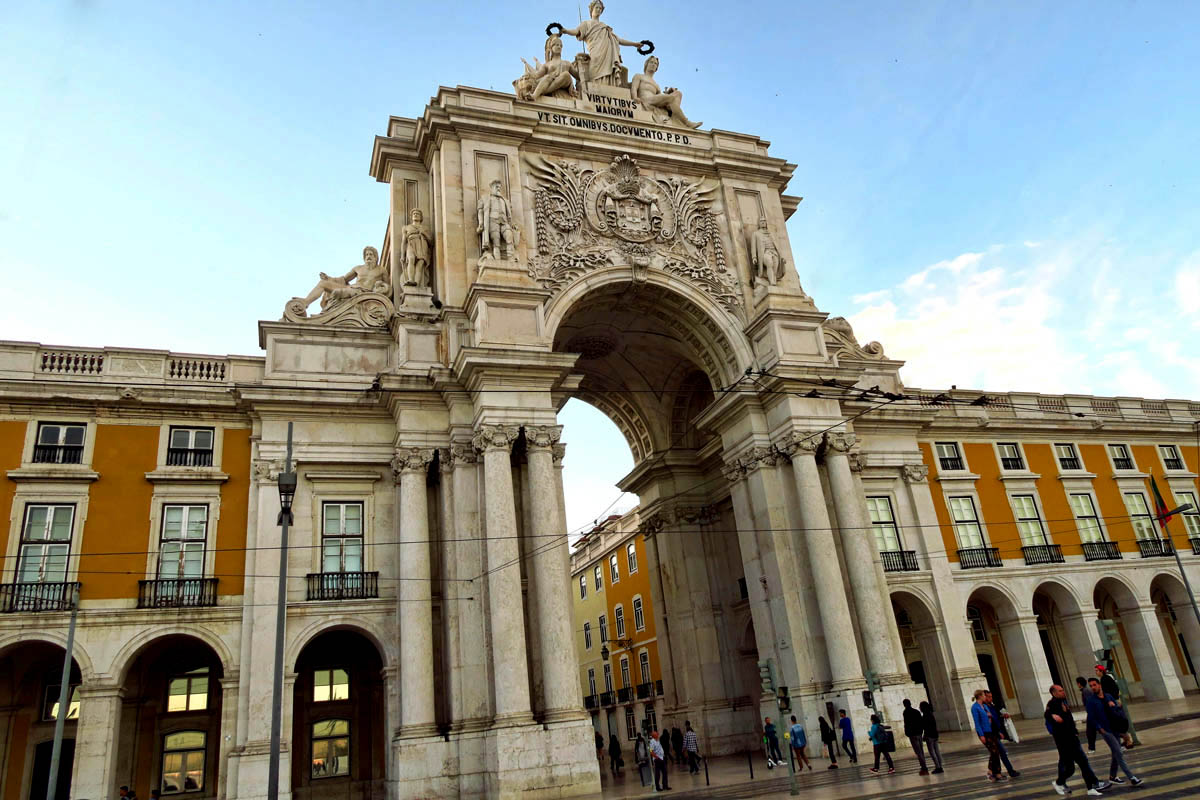
The Rua Augusta Arch in the center of the U-shaped Praça do Comércio, or Commerce Square facing the Tagus River was built to commemorate the cities reconstruction after the 1755 earthquake.
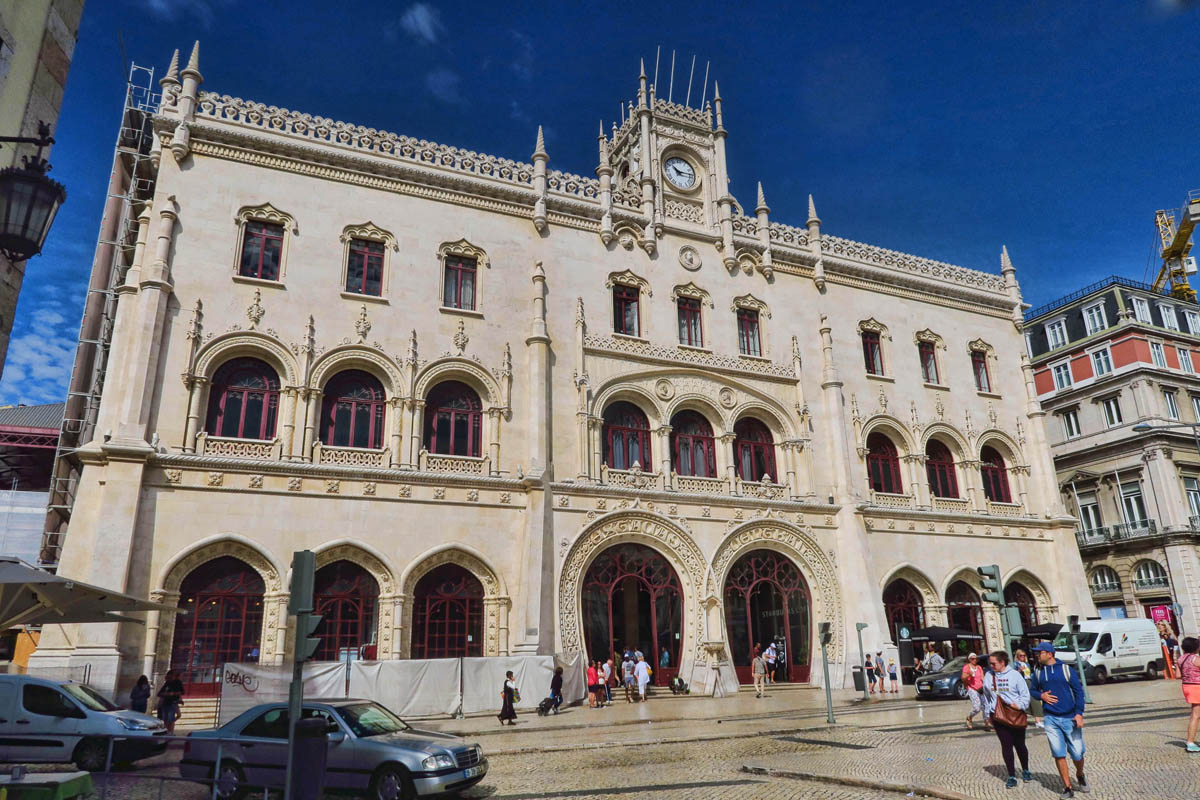
The beautiful Rossio Train Station. Second floor windows look out from Lisbon’s Destination Hostel, my new home for a week.
I didn’t realize how significant the changes in elevation were until I was using Google maps to navigate, when the route dead-ended into a building. I thought maybe it was GPS interruption, so I re-centered and tried again. Same answer. It wasn’t until I looked up at the top of the building and saw the big neon sign “ELEVADOR CASTELO” when I finally got it. I needed to take an elevator up to the higher level street in order to continue navigation!
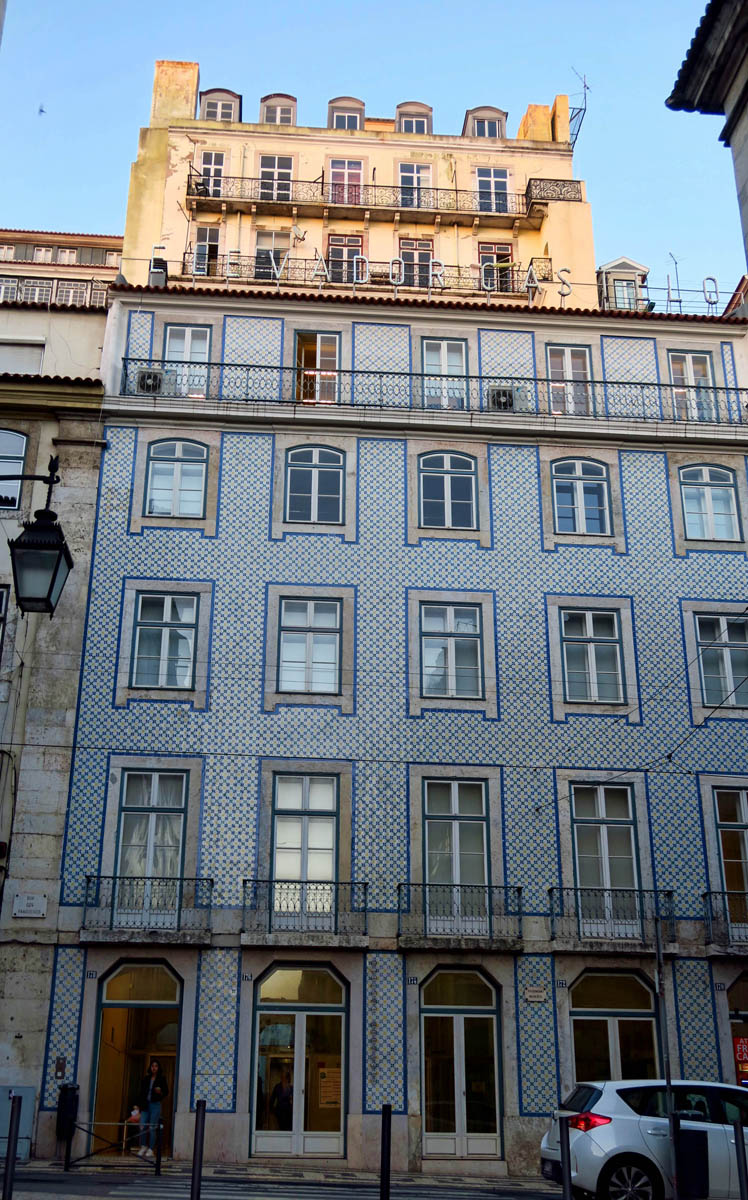
It’s difficult to see in this photo, but right up where the light changes are giant sized letters saying “ELEVADOR CASTELO.” Enter on this street level, and exit into a much higher street level.
I typically book my accommodations online via booking.com. While it’s a great resource for locating properties near the city center, often giving distances from the nearest bus, train or metro station, the one thing it doesn’t tell you is elevation. 😉 Information on my first three nights guesthouse stay said it was “a 10 minute walk from the metro.” What it didn’t say was “a 10 minute walk straight up three city blocks and two flights of stairs.”
When you see signs at the end of your block for the “mirador,” or scenic overlook, you know you’re way up there. While I strive to get exercise every day, I prefer that to be in the form of steps in and out of the metro, or walking from one attraction to the next, not climbing hills to get to my bed after a long day of touring. So after three days, I moved…

Beautiful views 270 degrees around, but the climb back up from the closest metro stop below is brutal.

Walking down from Alfama, I come upon this bar advertising “Best Terrace in Lisbon.” I think they might be right!
Lisbon being the equivalent of Portugal’s Manhattan, rooms are understandably more expensive here than in the smaller towns. So as to not spend all my time underground on the metro, I was seeking something a little more centrally located. That leaves two options, expensive hotels, or hostels. Lisbon’s Destination Hostel, Lisbon’s highest rated hostel, is located right on the 2nd floor of the Rossio Train Station, across the street from the central Rossio Square and a couple of blocks from the waterfront. Now when I am climbing hills, at least it’s early in the day, and not on my way home for the evening!
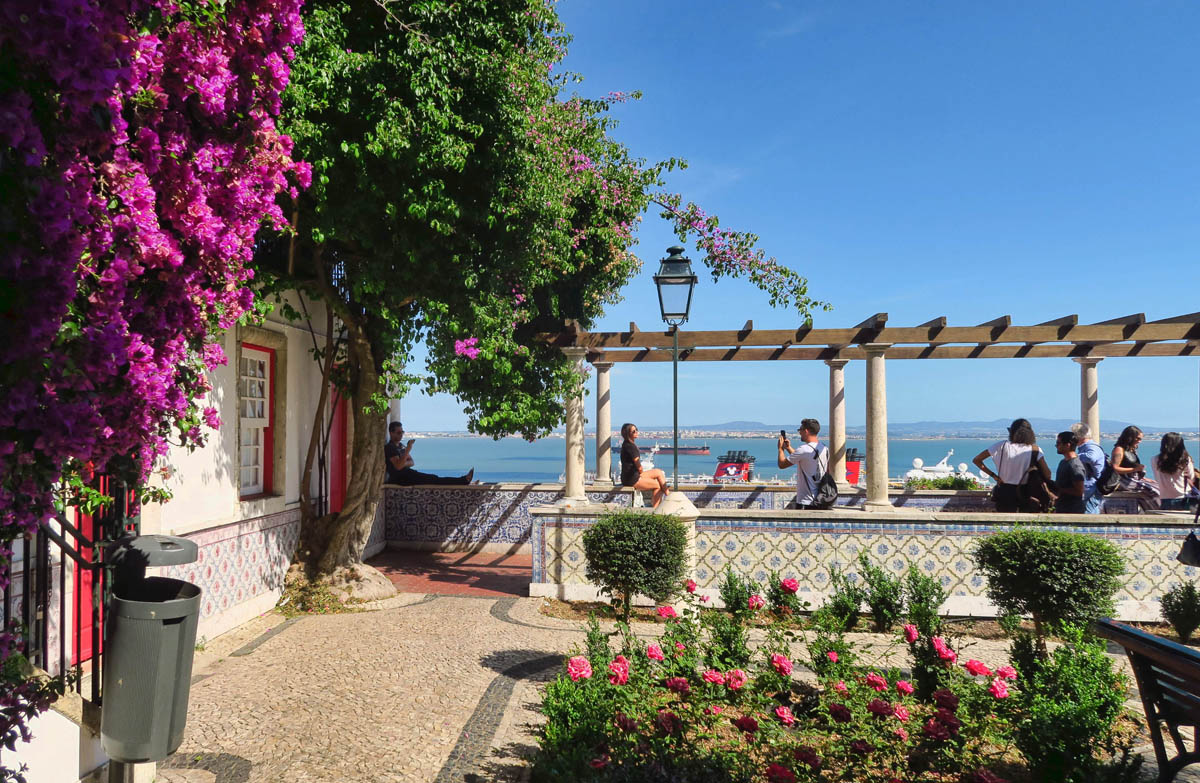
Another of the cities famous miradors in Alfama, “Miradouro das Portas do Sol,” or the Gateway of the Sun.”
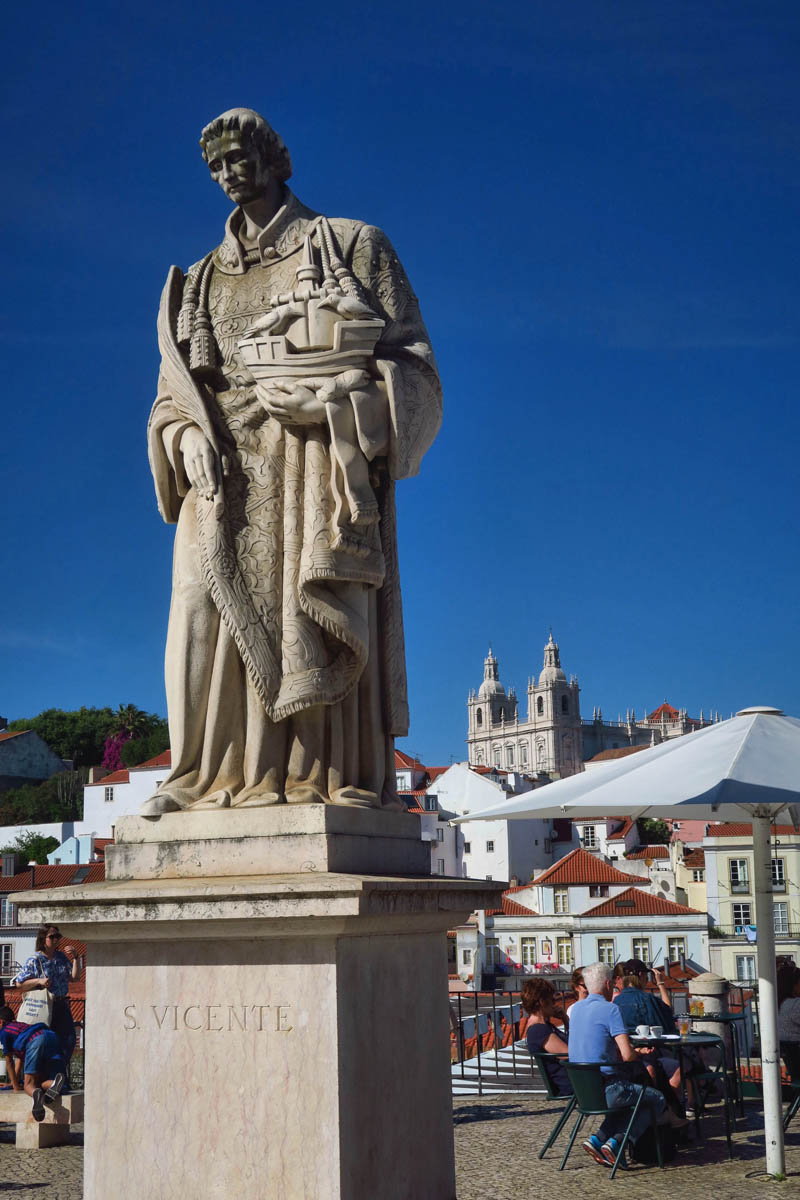
The square backing the mirador contains a statue of St. Vincent (Lisbon’s patron saint), holding the symbols of the city, a boat with two ravens.
There are so many opportunities to get beautiful views of the city, and an equal number of ways to help you get there, from trams, stairs, outdoor escalators, indoor elevators, it’s a city in vertical motion. And no “people mover” is more famous than the Santa Junta Lift, built in 1901. The architect, Raul Mesnier de Ponsard, was a student of the great iron craftsman Gustave Eiffel of Eiffel Tower fame, and found inspiration for the iron and filigree lift from his mentor. The seven story tower serves two purposes, it’s actually an elevator to reach the higher streets, and its observation platform offers beautiful views over the city.

The Santa Junta Lift, inspired by the Eiffel Tower, built in 1902. You can see the walkway from the higher street to the elevator.
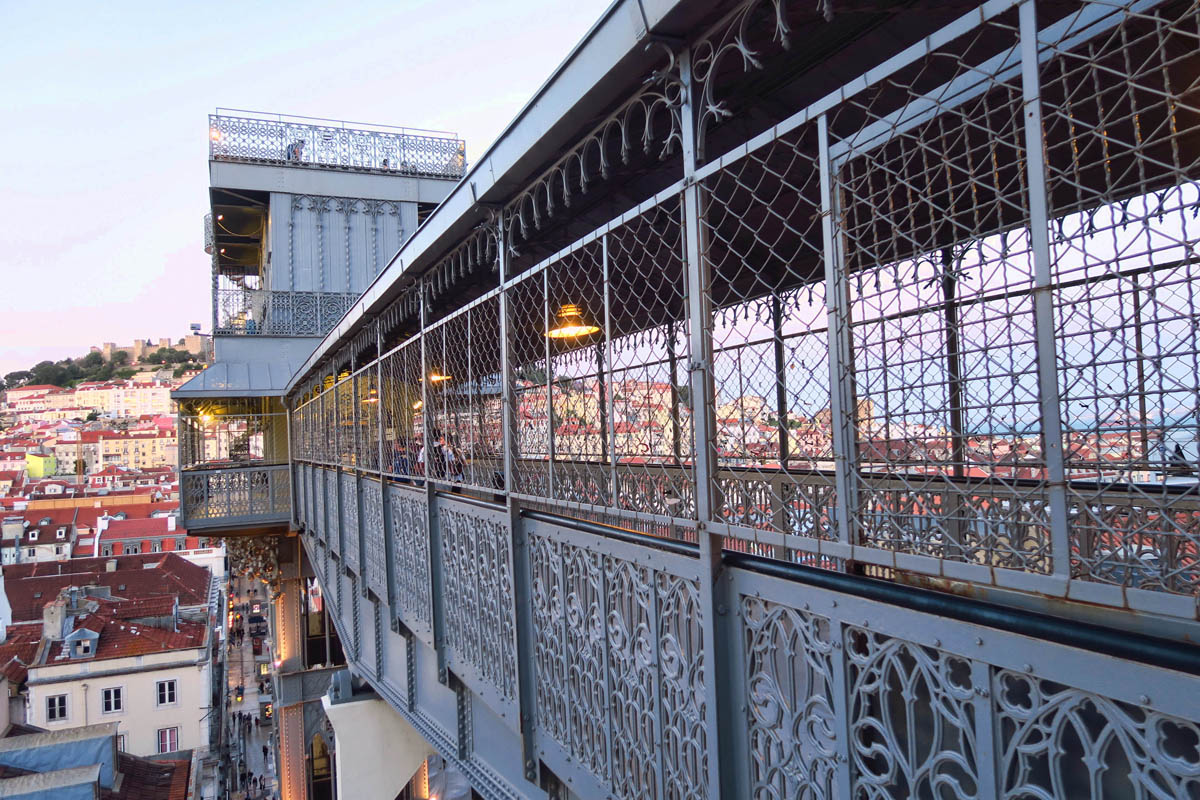
If you go from the bottom, it costs 5 euros to ride up and down. If you enter from the higher Bairro Alto neighborhood, it’s free to ride down, or 1.50 Euro to climb to the observation deck.
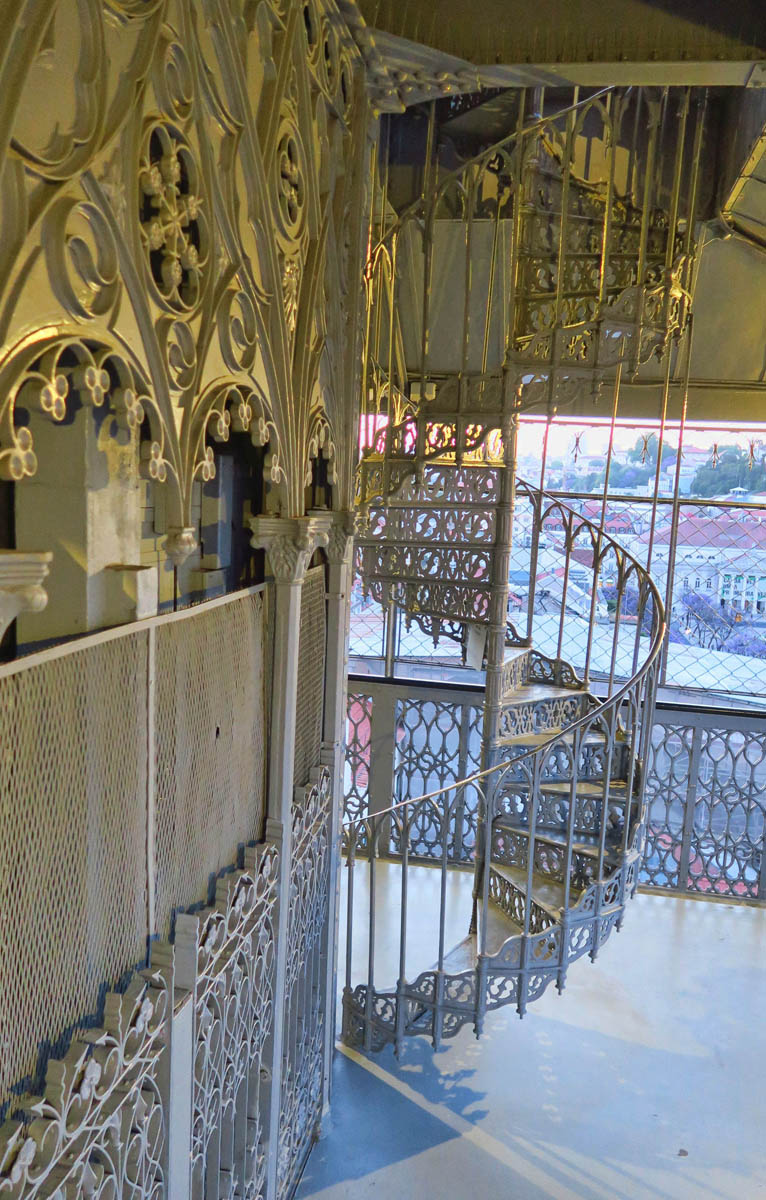
I am here on the tail end of my 24 hour Lisboa Card, which includes the observation tower, otherwise you must pay 1.50 to climb this spiral staircase from the top of the elevator to the observation platform.

It’s great views over the city, even though I am here at the “blue hour” after sunset. Overlooking Rossio Square.
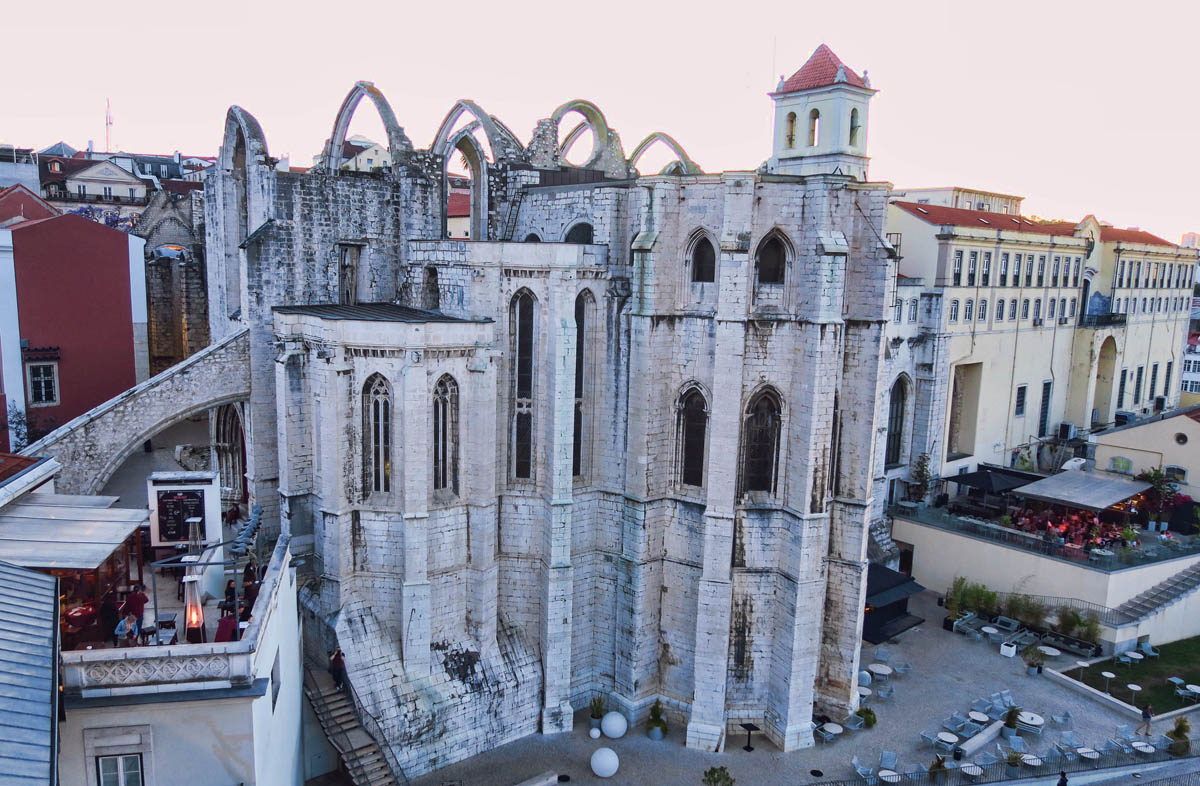
Ruins of Carmo Convent, gothic church devastated in the 1755 earthquake, when at the time it was the largest church in Lisbon.
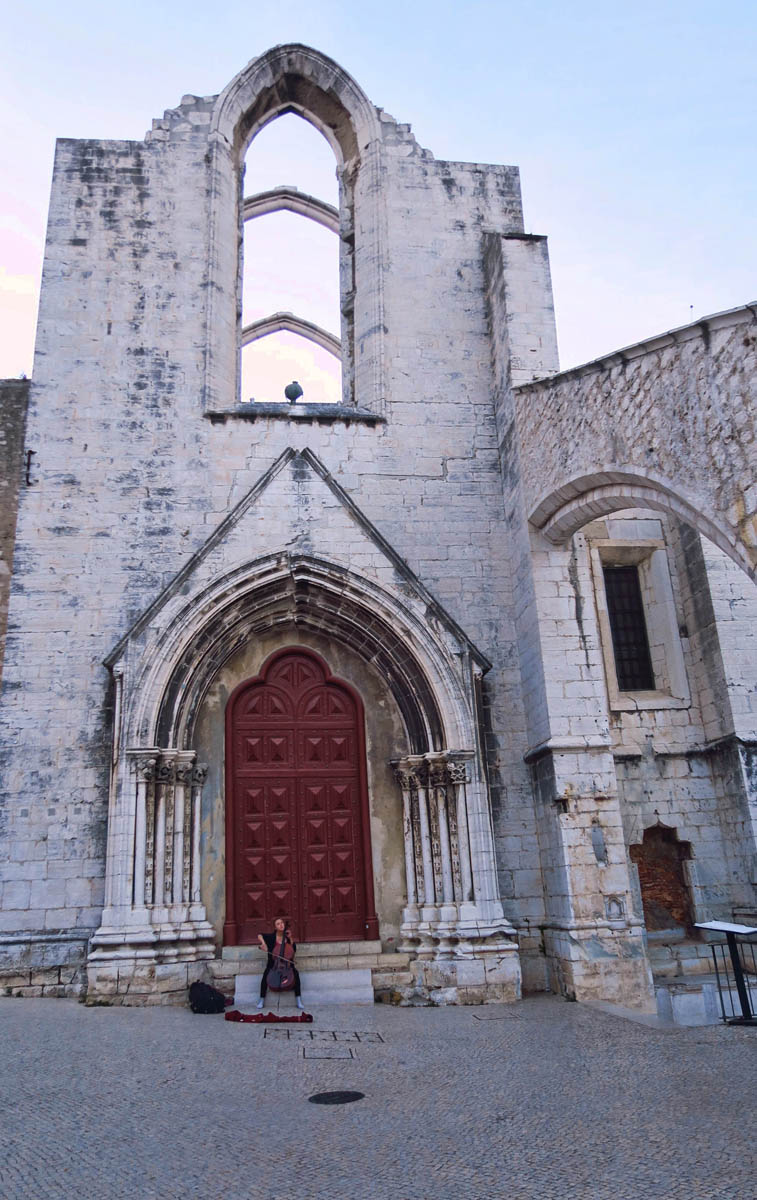
Lone cellist in front of Carmo Convent ruins, playing for no one but me, who is unfortunately without a single coin in my pocket.
Once you reach the top, some of Lisbon’s most famous monuments are located, making it worth the effort to get there:
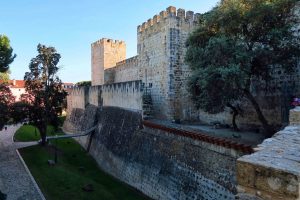
At the top of one of the seven hills is Castelo de S. Jorge, an 11th century castle overlooking the city.
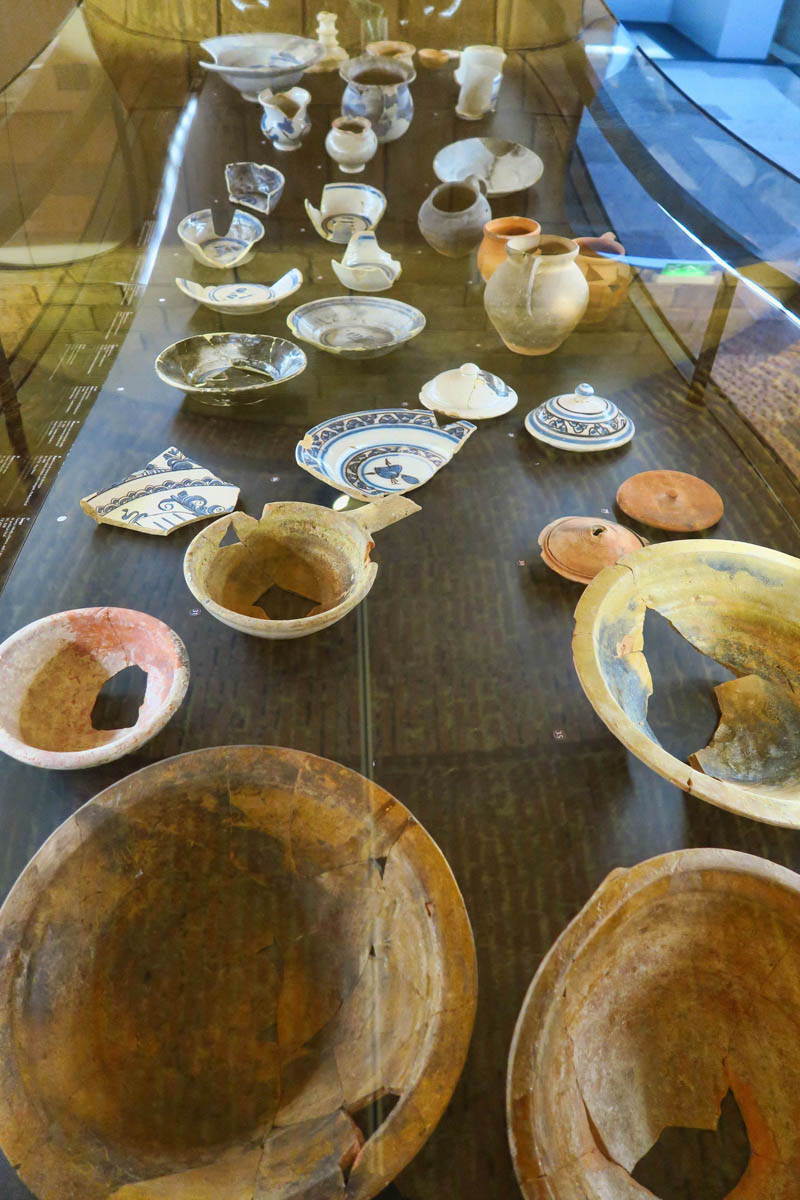
A permanent exhibit showing relics found from the 11th century Moorish period all the way up to those from the Royal Residence destroyed in the 1755 earthquake.

This is Lisbon’s most popular tourist attraction, so lines can be long. I recommend going late in the day, when lines are no longer a factor, and lighting is lovely. The castle is open until 9:00pm from March to Oct.
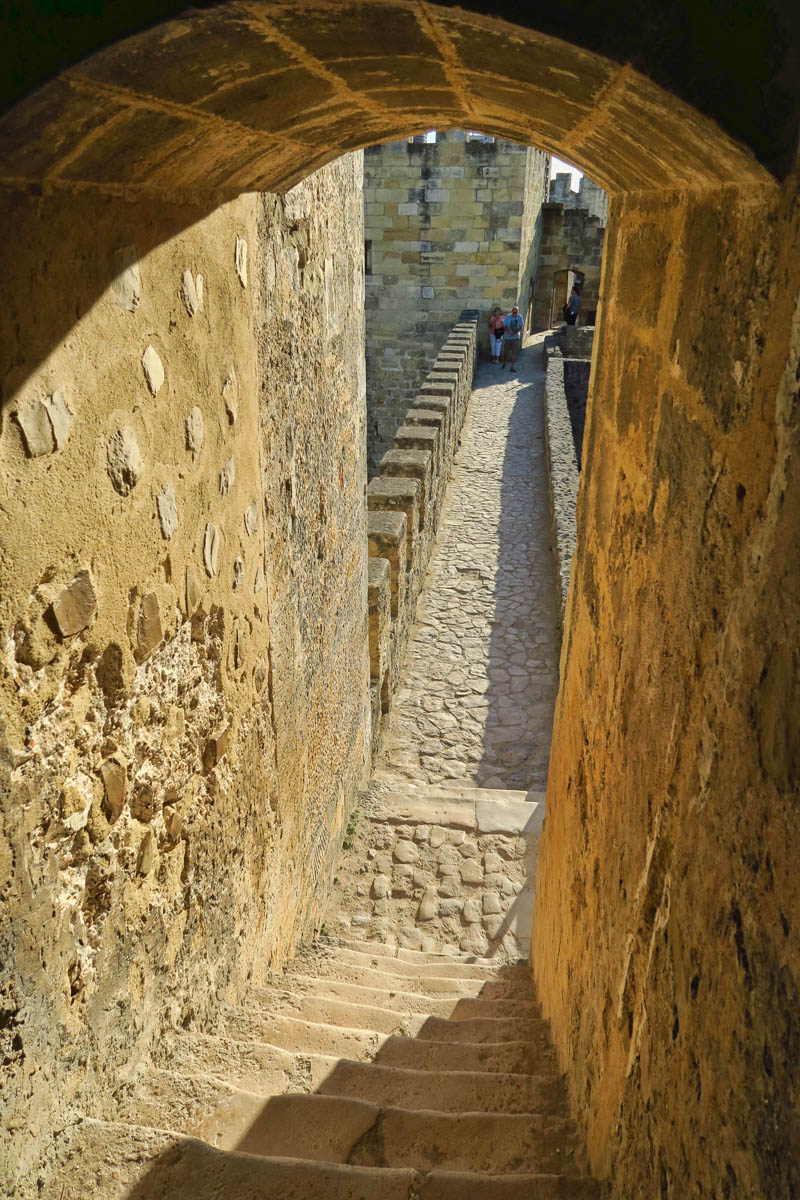
The castle has served as a Moorish outpost in the 11th century, a Royal Residence from the 13th to 16th centuries, military barracks from the 17th century until the earthquake of 1755, and then a military garrison. It is now a national monument.

Perhaps Lisbon’s second most noteworthy monument is the Lisbon Cathedral, referred to as the “Sé,” a Roman Catholic church begun in 1147. The cathedral was built on the site of a mosque when the Christians recaptured the city from the Moors. Excavations are currently underway in the cloisters to uncover an archeological site containing a pedestrian street from the Roman times, as well as a public building from the Islamic period.
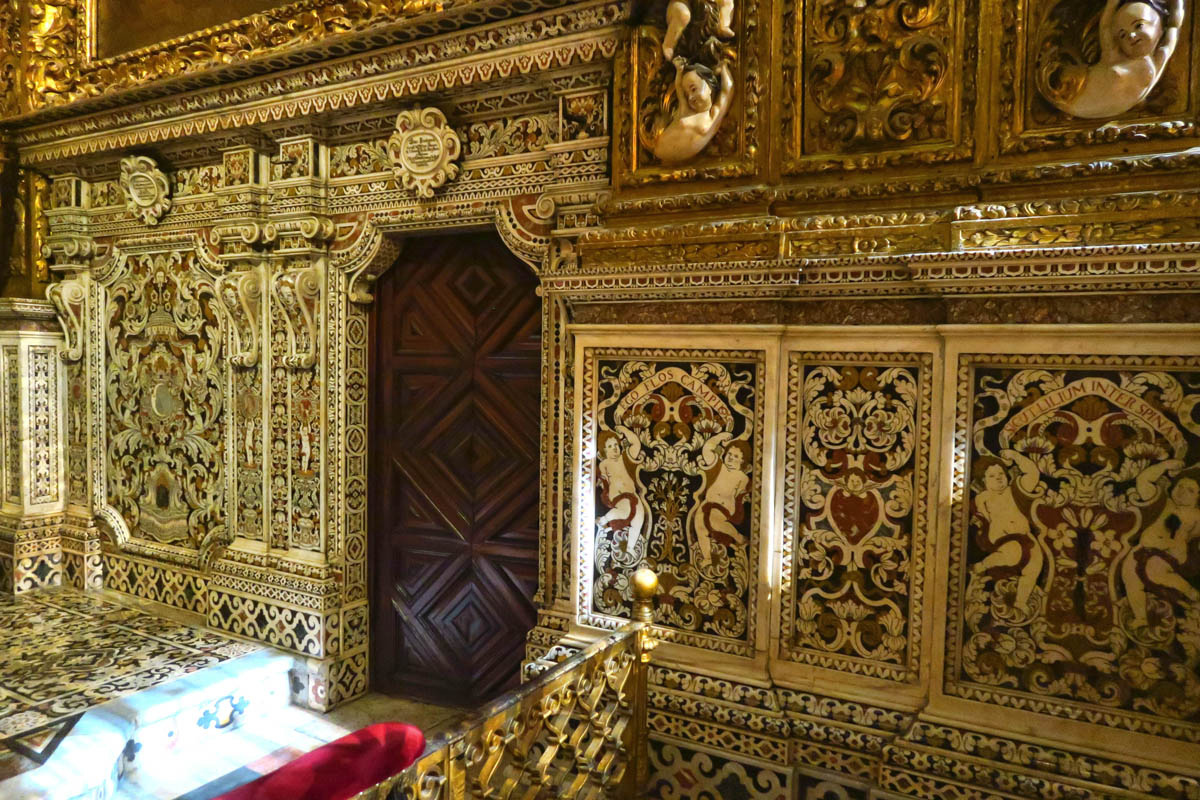
But my favorite Lisbon church is the Igreja de São Roque, Church of Saint Roch, built in late 16th century. While the facade is boring to the point you might miss the fact that it’s a church, inside the walls are lined with inlaid marble and gemstones of lapis lazuli, agate, antique green, alabaster, Carrara marble, and amethyst. It was one of the few buildings in Lisbon to survive the earthquake relatively unscathed.
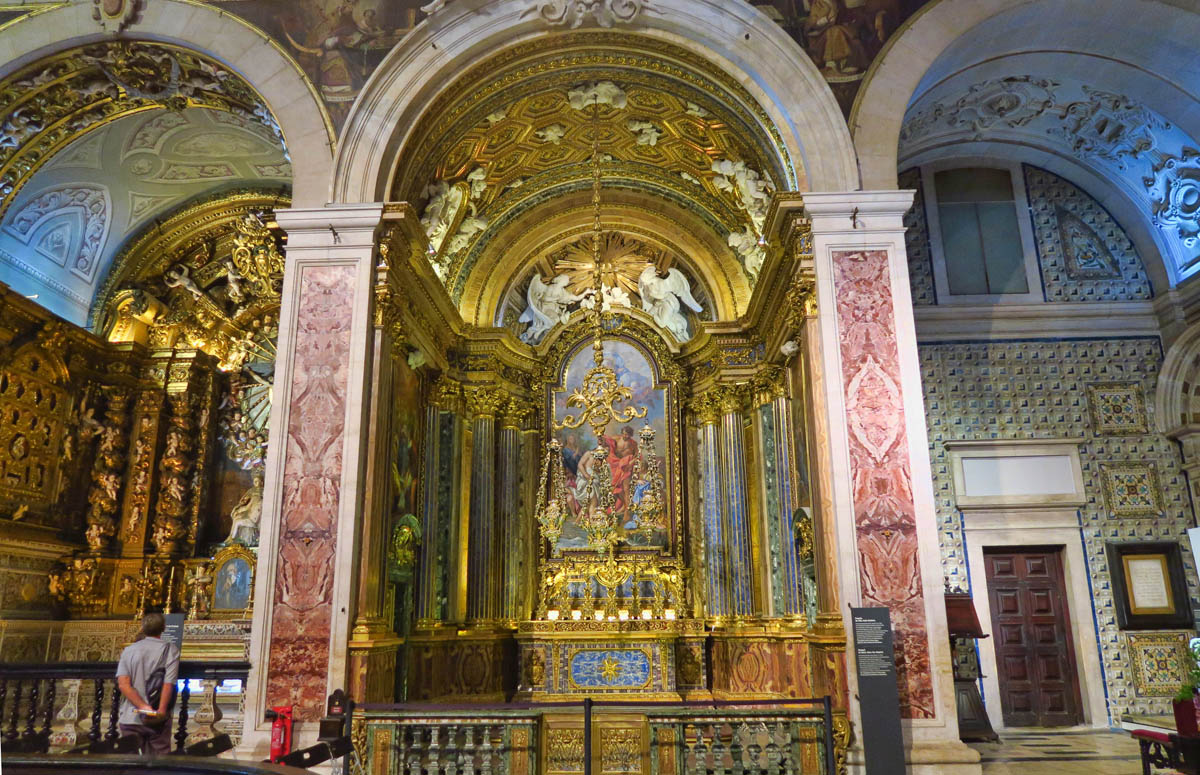
This church is just a work of art on all sides, including the chancel, eight main side-chapels, and five other altars in the transepts. The most notable chapel is the 18th-century Chapel of St. John the Baptist, constructed in Rome of many precious stones and disassembled, shipped, and reconstructed in São Roque.
Next up, one last post within the city of Lisbon as I make the difficult decision on which museums to visit.

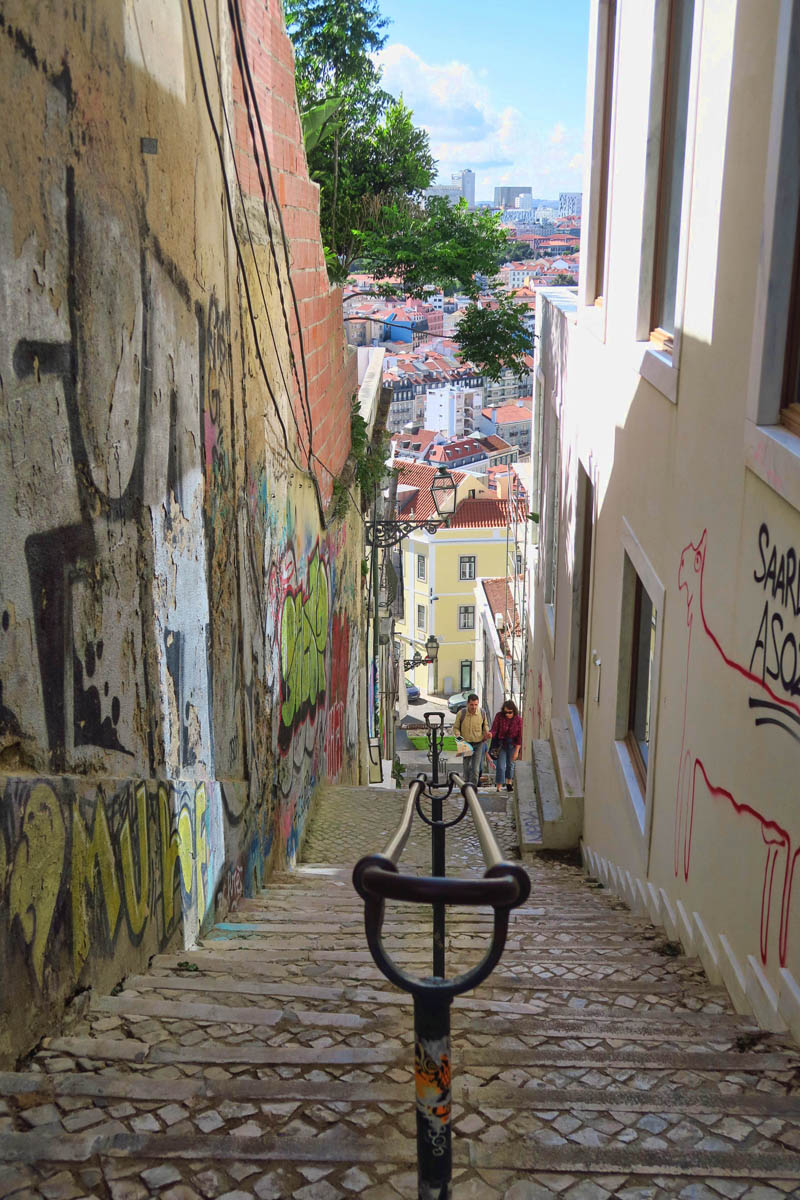
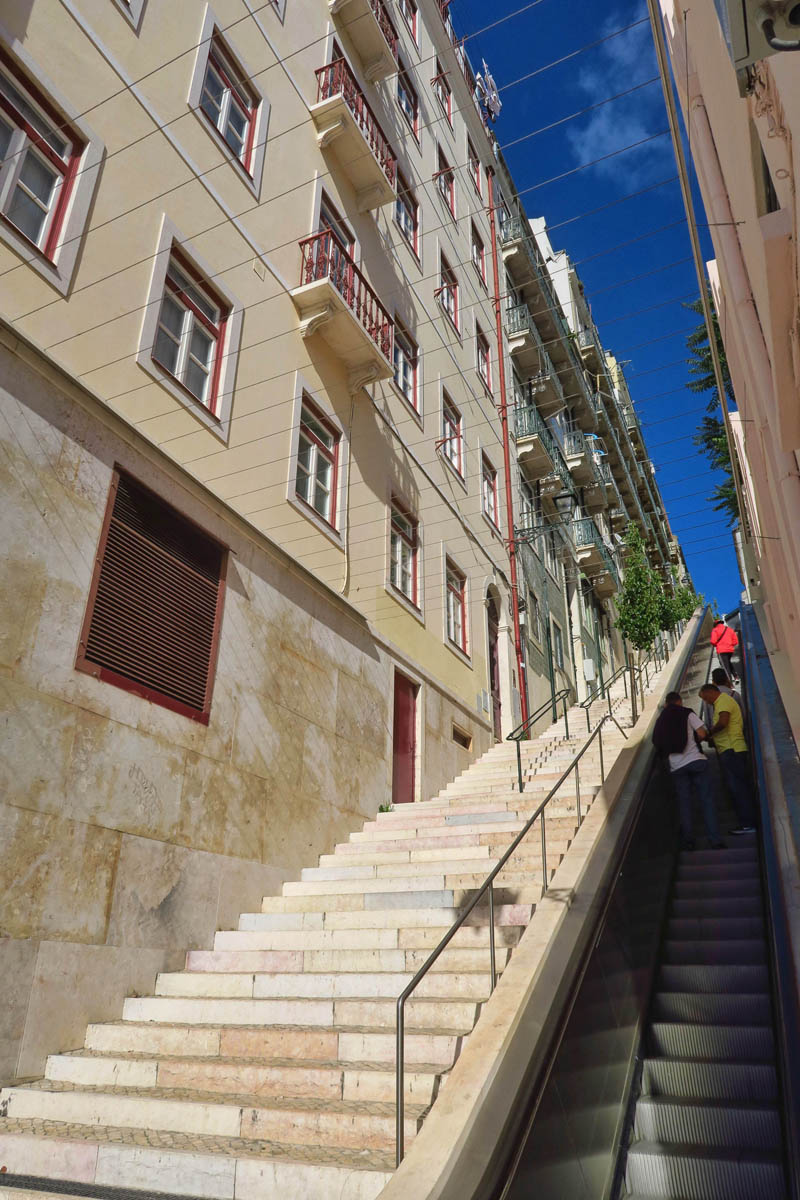
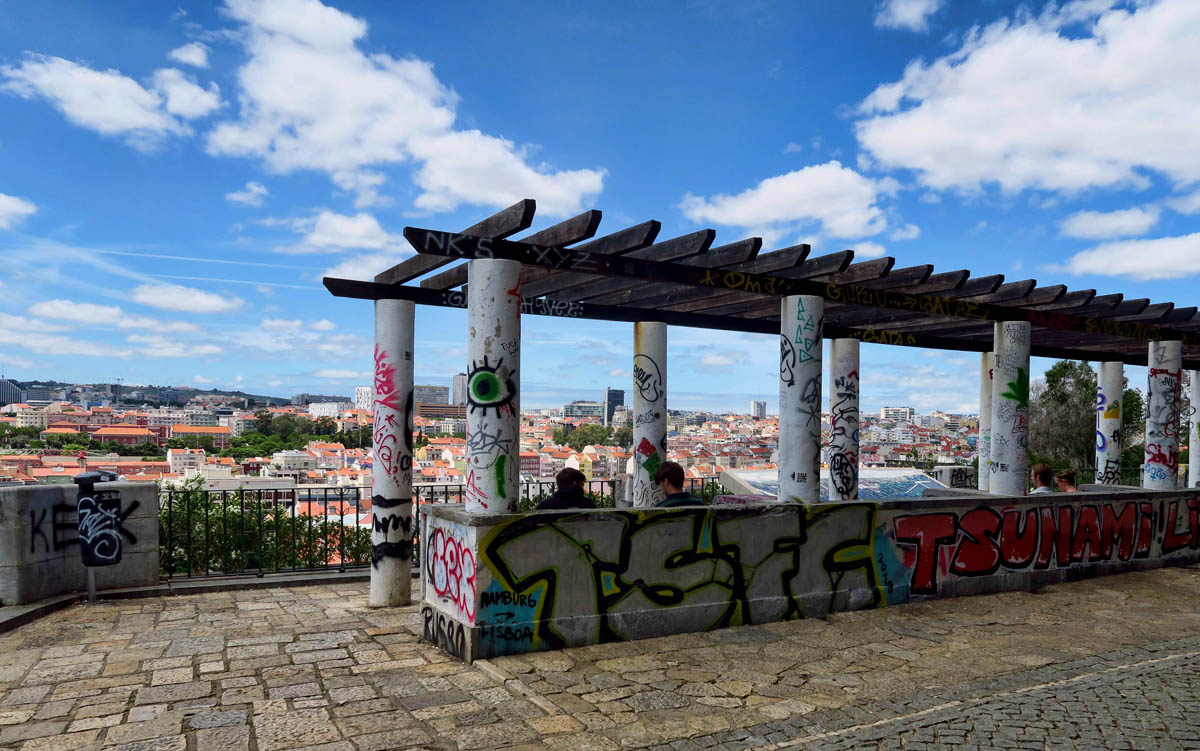
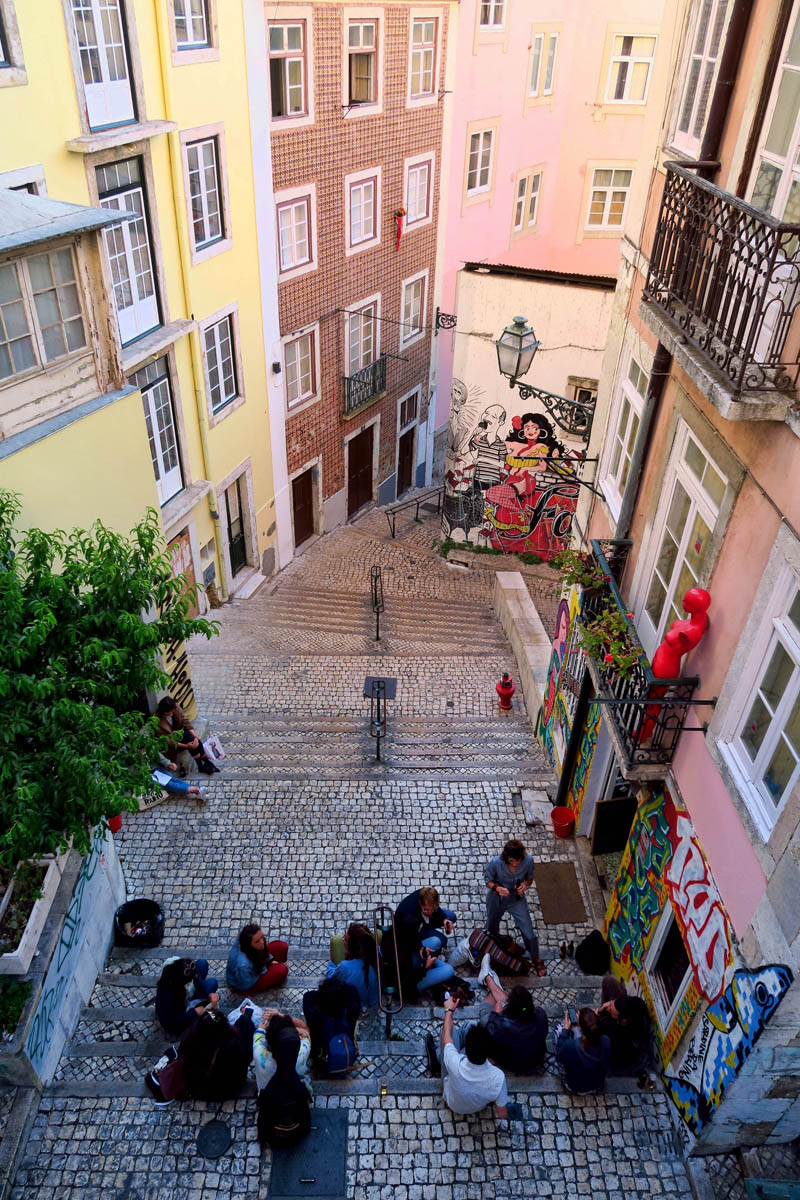

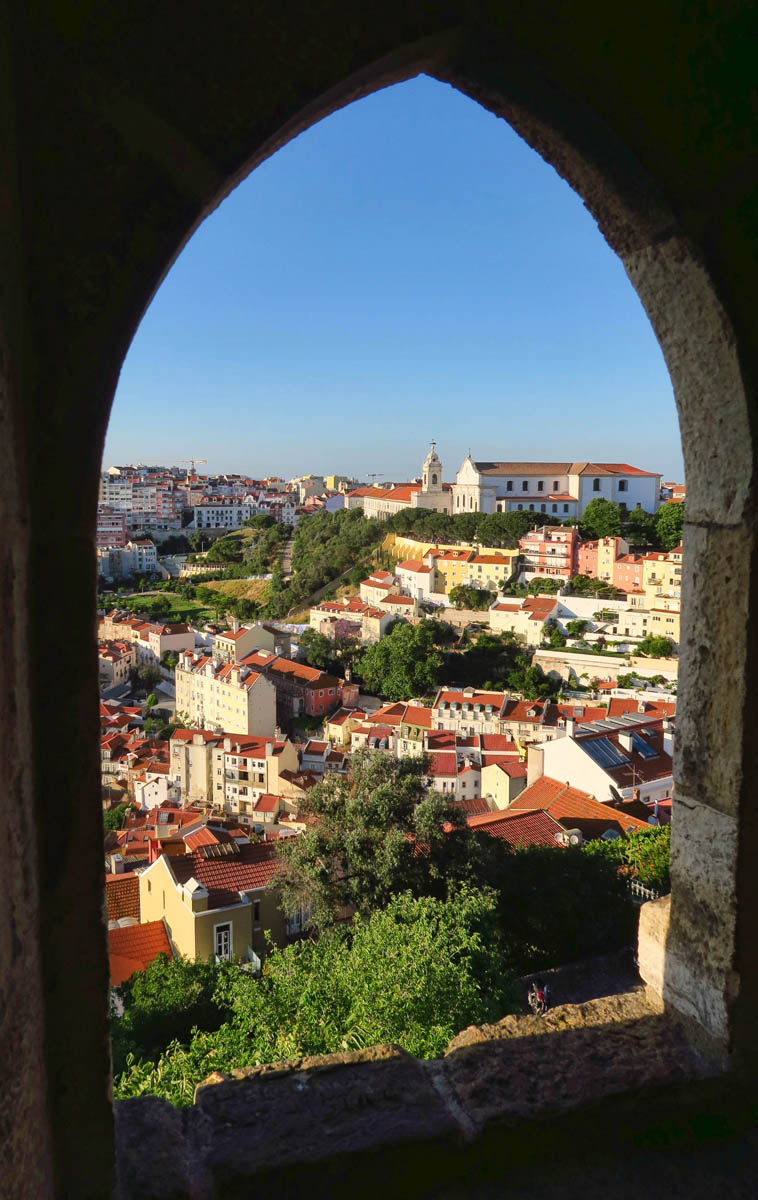
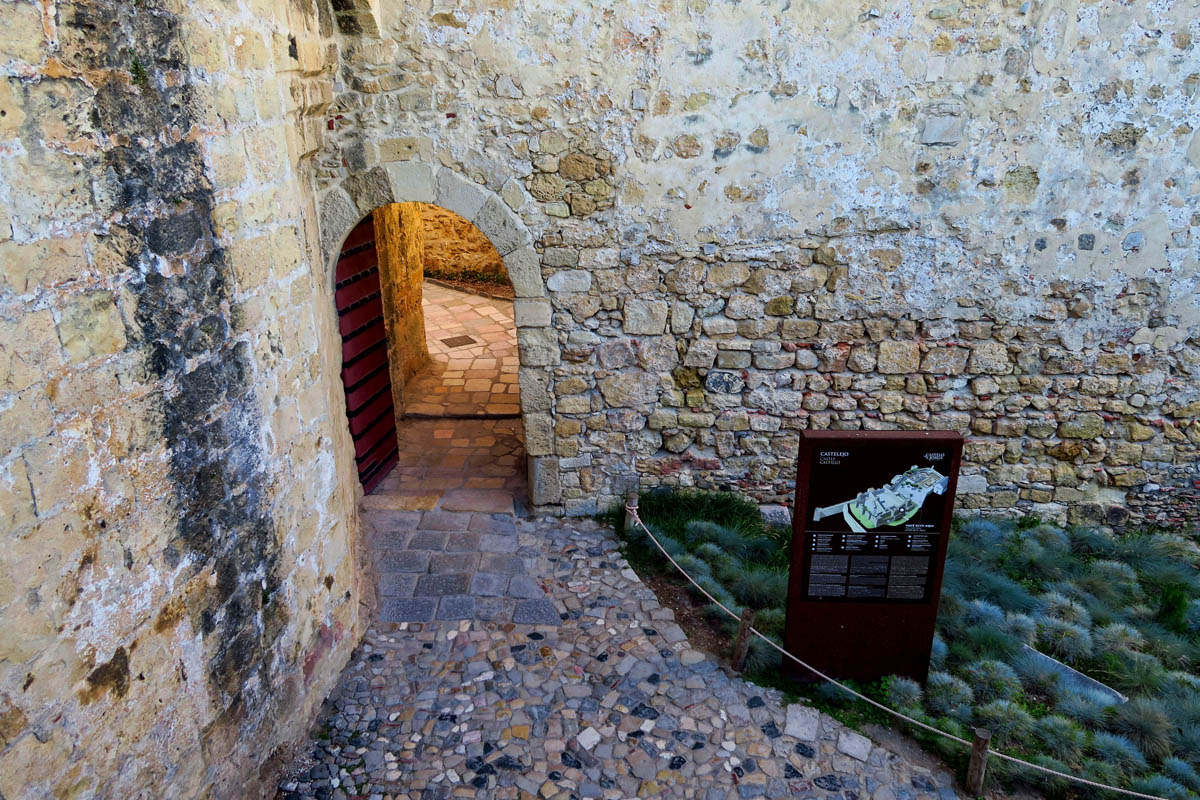

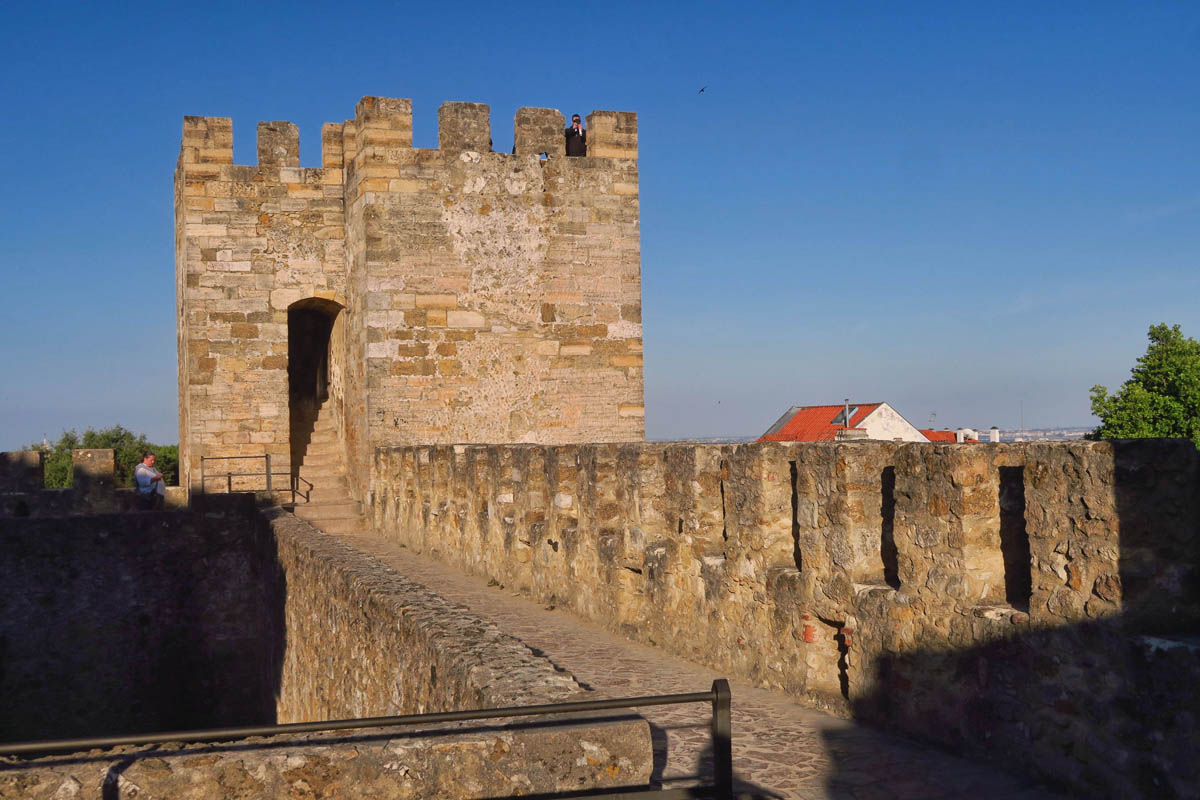

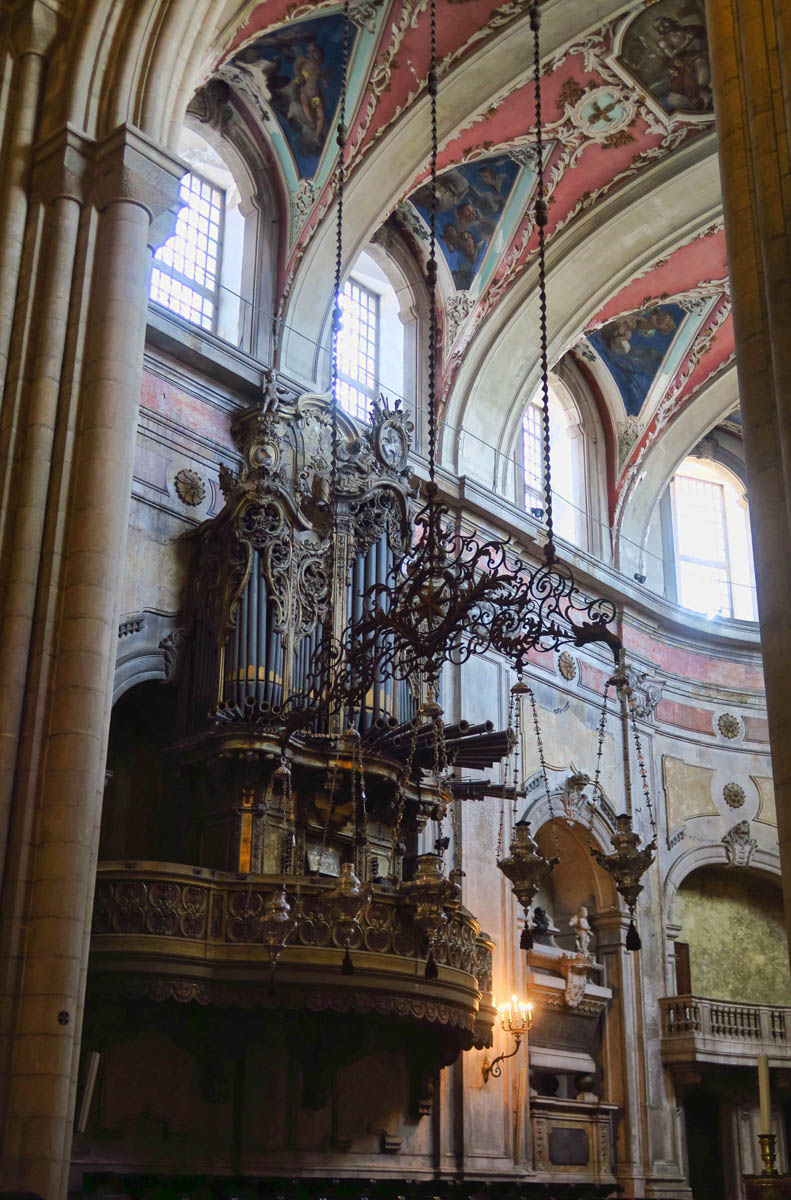
I enjoyed every photo and all your descriptive comments. Lisbon is a City I’ve always wanted to see, and now I have! Thank you!
Truly wonderful city! On my list! I’m going to Europe again next summer 2020. Lisbon (as told by you, thank you) captures everything I love about Europe.
What a beautiful city! Love the views from the miradors.
What an interesting city! Never heard of elevators to get from one street to another. Those church’s are incredible. just thinking of anything built in the 1100’s baffles my mind!
Suzanne,
I am always entranced by those really worn stone steps, like those in the castle! So much to think about all the feet that have trod them. And at dusk when the light is fading the depth of the wear shows so well! But then, as you describe so well, how would you make it up and down so many more of them to get home to your bed? Wonderful photographs and writing as always!
I was hoping you visited some museums; I’ve heard how spectacular they are. I also have heard you can buy souvenir tiles but never had seen photos of the beautiful floors you posted in an earlier post. I have to admit, I was disappointed to see all that graffiti. Guess it happens in just about every big city around the world.
Looks like an amazing city to visit…and an incredible workout!
Beautiful photographs, stunning views and, as always, wonderfully informative commentary. I pondered over this post for awhile. Thank you… 🙂